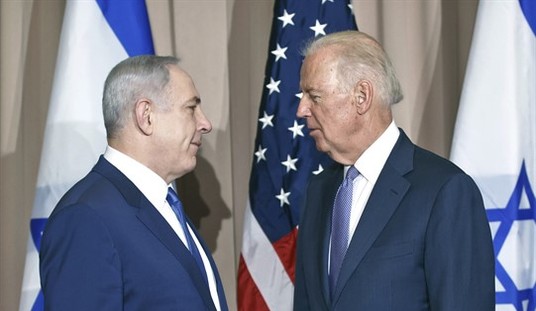
In 1979, The Who, at the peak of their career, released the documentary summing up the band’s first 15 years, The Kids Are Alright. As veteran rock critic Dave Marsh wrote in his 1983 biography of the group, Before I Get Old, published to coincide with the band’s “first” farewell tour that year:
Kids is one of the most anarchic documentaries ever assembled, running two hours without a shred of narration and with not so much as a subtitle identifying characters or dates. Kids was the perfect cult item, and Who fans flocked to it. Hardly anyone else did, however, so even though it remained a staple of the midnight movie circuit, part of every kid’s introduction to the verities of the Rock of Ages, the film had little impact outside of the Who’s cult. The Kids Are Alright is, nevertheless, one of the great rock and roll movies, capturing all of the Who’s sass and humor and taking the wind out of the band’s pomposity at each and every opportunity.
Naturally, Keith Moon stole The Kids Are Alright, which became a summation of his career as the Who’s anarchic drummer, who passed away nine months before its release, choking on an overdose of the pills he was prescribed to battle his alcoholism.
This year, filmmaker James D. Cooper released Lambert & Stamp, a documentary about the Who’s first managers, a film that can be thought of as the liner notes to The Kids Are Alright. If you’re a fan of the band, you owe it to yourself to see this film while it’s in the theaters (I saw it last night at a sparsely attended showing at the Camera 3 in San Jose), to get a sense of two men who did so much to shape the group in the 1960s. How much you know about the Who will shape how much you enjoy this new documentary, which is built around a lengthy series of interviews with Chris Stamp (1942-2012), the younger brother of veteran actor Terence Stamp (Superman II, Wall Street, The Limey), who also appears in the film, along with Pete Townshend, Roger Daltrey, Daltrey’s wife Heather, and other Who insiders.
Instant Party
The Who were one of the most unlikely of bands; Pete Townshend, art school devotee and later follower of Sufi mystic and guru Meher Baba, was essentially the timekeeper of the group, even though he was the rhythm guitarist. Keith Moon’s anarchic surf-music-inspired drumming provided brilliant percussive colors; but keeping time was not his metier; he was not a man in search of a simple backbeat on the 2 and 4. With his fluid single-note runs, John Entwistle was in many ways the band’s lead guitarist, despite being the bassist. And Daltrey, the founder and nominally the frontman of the group, was forced to fight for attention as singer as his three innovative sidemen roared away alongside him. Somehow it worked — brilliantly — in spite of themselves.
Similarly, Lambert and Stamp were the most unlikely of rock managers. They hadn’t really planned to be managers at all. Kit Lambert (1935-1981) was the son of composer/conductor Constant Lambert, who sought to make a name for himself in the shadow of his famous father, who died, as Wikipedia notes, in 1951 “two days short of his forty-sixth birthday, of pneumonia and undiagnosed diabetes complicated by acute alcoholism.”
Britain didn’t legalize homosexuality until 1967; the upper-class Lambert was very much gay during that era. And the handsome, modish Stamp was equally aggressively heterosexual and working class, the son of a tugboat captain. The two originally didn’t want to be managers; after meeting while both were working at Shepperton Studios in the early 1960s, they were looking for the perfect rock group to feature in a documentary on the exploding British rock scene in the wake of the Beatles and the Rolling Stones, when they stumbled into the Railway Hotel in Harrow where the Who were playing Motown songs to an overpacked room crammed mostly with hundreds of young Mod men. As the documentary explains, Lambert and Stamp were instantly convinced they had found the perfect group for their film; the band was instantly convinced they were the authorities, about to close down the gig as a fire hazard. While they did shoot some early footage of the group, Lambert and Stamp decided instead they’d rather be Brian Epstein than filmmakers, and quickly began managing the group.
Keith Moon brilliantly summed up the tone of the two men in the early days in his 1972 Rolling Stone interview:
Kit Lambert came to see us playing at the Railway ‘Otel in ‘Arrow. We had a meeting. We didn’t like each other at first, really. Kit and Chris. They went ’round together. And they were . . . are . . . as incongruous a team as we are. You got Chris on one hand [goes into unintelligible East London cockney]: “Oh well, f**k it, jus, jus whack ‘im in-a ‘ead, ‘it ‘im in ee balls an’ all.” And Kit says [slipping into a proper Oxonian]: “Well, I don’t agree, Chris; the thing is . . . the whole thing needs to be thought out in damned fine detail.” These people were perfect for us, because there’s me, bouncing about, full of pills, full of everything I could get me ‘ands on . . . and there’s Pete, very serious, never laughed, always cool, a grass-‘ead. I was working at about ten times the speed Pete was. And Kit and Chris were like the epitome of what we were.
Lambert was a brilliant ideas man; he shaped The Who’s image as sharply-dressed mods, encouraged Townshend and Moon’s guitar and drum smashing, and hired a graphic artist to design The Who’s iconic “Maximum R&B” poster (a copy of which is hanging behind me in my home office as I write this). Lambert also moved Townshend into Lambert’s flat in the posh Belgravia section of London, giving the band a veneer of success far beyond what they were earning as working musicians. Meanwhile Stamp was largely funding the band’s early days via his work as a second assistant director on the Kirk Douglas WWII movie, The Heroes of Telemark.
Lambert fueled Townshend’s composing skills, convincing him to link together several short, incomplete songs into one nine minute number in 1966 called “A Quick One,” which the two called “their mini-opera,” and which Townshend credits for inspiring some of the ideas on Sgt. Pepper, the Beatles’ landmark concept album the following year. That album would go on to inspire the Who’s double album “rock opera,” Tommy, released in 1969.
Empty Glass
As the Lambert & Stamp documentary notes, Tommy was a mixed-blessing for the group. It solved all of their financial woes and would make them quite wealthy. Touring it, the band would play both Woodstock (where Townshend famously kicked Abbie Hoffman off the stage to the relief of millions) and, fulfilling a lifelong goal of Lambert, real opera houses such as the Metropolitan Opera House in New York. During live performances, the film background of Lambert and Stamp came into play via the simple but brilliant gesture of aiming a bank of arc lights behind the band into the audience during the climactic song “See Me, Feel Me,” which contained the lines, “Listening to you, I get the music, Gazing at you, I get the heat,” a celebration of their audience. Long after Stamp and Lambert had ceased managing The Who, the band would go on repeat this trick for years to come when performing the song live. In the documentary, Chris Stamp tells of going to heroic, albeit futile efforts to try to book the band into Bolshoi Theatre in Moscow, if only to generate the headline “THE WHO SMASHES IRON CURTAIN!”
But Tommy marked the beginning of the end of Kit Lambert’s mentoring relationship with Townshend. Townshend was desperate to write an album that would be bigger than Tommy. Lambert was desperate to produce or direct the Tommy movie. Townshend would have a nervous breakdown writing Lifehouse, the proposed follow-up album, which failed as a concept due to Townshend’s indecipherable story line. As his lifelong friend Richard Barnes once acerbically told an interviewer, “There were two groups: people that understood ‘Lifehouse,’ and people who didn’t. The people who understood Lifehouse included one, Pete Townshend. The people who didn’t was everybody else he ever tried to explain it to, and the whole rest of the human race, which was about four billion at the time.”
Meanwhile, Lambert was using the prototype Lifehouse as a springboard with Universal to get the Tommy movie made, as Wikipedia notes:
While the Who was struggling to articulate Townshend’s Lifehouse concept, Lambert shopped a film version of Tommy without the band’s authorization — Townshend later said Lambert was falsely telling studios that Lifehouse was actually Tommy under a new name. This led to significant differences between him and the group, and after litigation was initiated for unpaid royalties, he and Stamp were fired in 1974, but only officially ended their partnership with the band two years later. The band reached out to Lambert in 1973 during the recording of Quadrophenia, but his drug abuse and the allegations of missing funds stalled the efforts at reconciliation. In the late 1970s he went on to produce some early punk bands, but with little success.
It’s this period of the Who’s career that the Lambert & Stamp movie suffers the most. If you’re not an absolutely rabid Who fan, you’ll have difficulty making sense of what’s going on, and why so much dissipation is occurring in the band and its managers, culminating in the death of Keith Moon, which, as several critics have noted, the film treats almost as an afterthought.
While Lifehouse was ultimately stillborn as a concept album, the songs Townshend wrote became the backbone of their best-selling 1971 album Who’s Next, which, as a one-two punch with Tommy, established the band as staples of the 1970s American hockey arena (and later football stadium) touring circuit. “War machine road warriors,” to paraphrase Townshend’s description of the band during this phase in their documentary. Lambert’s promotional gimmicks were no longer necessary to break this now-established band and between the Lifehouse debacle and Townshend’s worship of Indian guru Meher Baba, his relationship with Kit Lambert was irrevocably estranged.
As the Wikipedia quote above hints, Roger Daltrey ordered a full accounting of the band’s ledgers, and discovered that Lambert and Stamp were skimming money off the group, in part to fuel Lambert’s growing drug dependency. The two managers were eventually replaced by veteran hard rock manager Bill Curbishley, who, somewhat ironically, helped them achieve Lambert’s longstanding goal: he secured film deals to get the Tommy movie made, followed by The Kids Are Alright, the movie version of Quadrophenia (arguably the group’s best film), and as a starring vehicle for Daltrey, the 1980 film McVicar, a biopic of British bank robber John McVicar, the sort of life that street-tough Roger Daltrey could have turned to, if not for the success of The Who. By this period of their lives, The Who even co-owned Shepperton Film Studios, which they used for rehearsals, production of their films, equipment storage – and not least of which, as a tax loophole.
Lambert would die in 1981; Stamp lived until 2012, patching up his relationship with the band and participating in several of their video histories over the years, culminating in the new documentary, whose segments were shot over the last decade. As director Cooper told Rolling Stone this month, Stamp “was ill during the final stages of filming. You can see that he ages markedly during the movie. It was quite a struggle for him, but I barely realized that because he was so resilient and so present and so giving and courageous. We filmed right up until he couldn’t film anymore, which was exactly when I knew I’d gotten the whole story. It was weird. It was almost like he got it all out and then let go.”
If you’re a dedicated Who fan, you know the band’s history quite well, and everything I’ve written in this article is old hat – which means I don’t need to convince you to see this flawed but fascinating movie while it’s still on the big screen. Otherwise, the one-two punch of The Kids Are Alright and Lambert & Stamp could set you on a path to understanding the inner workings of a band that from 1964 to 1983 was simultaneously the smartest and most chaotic, the most frustrating and most rewarding group in rock. “They don’t make music like this anymore,” the old cliche goes — because they don’t make men like this anymore.
(Originally posted at Ed Driscoll.com.)









Join the conversation as a VIP Member